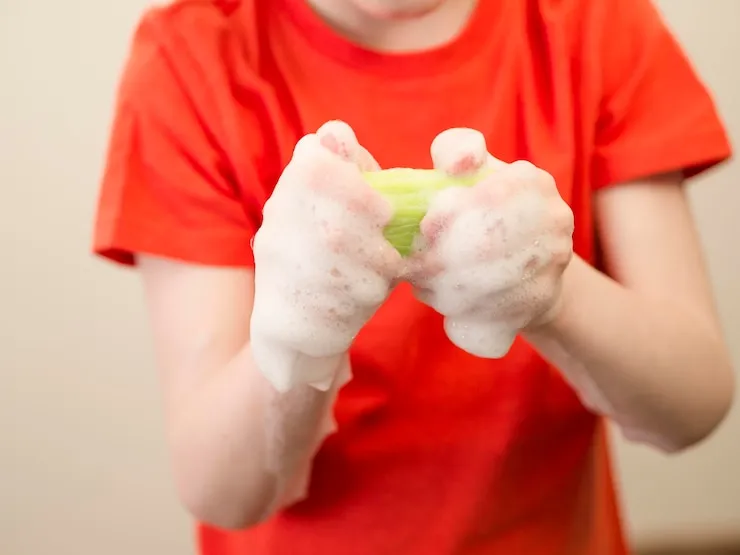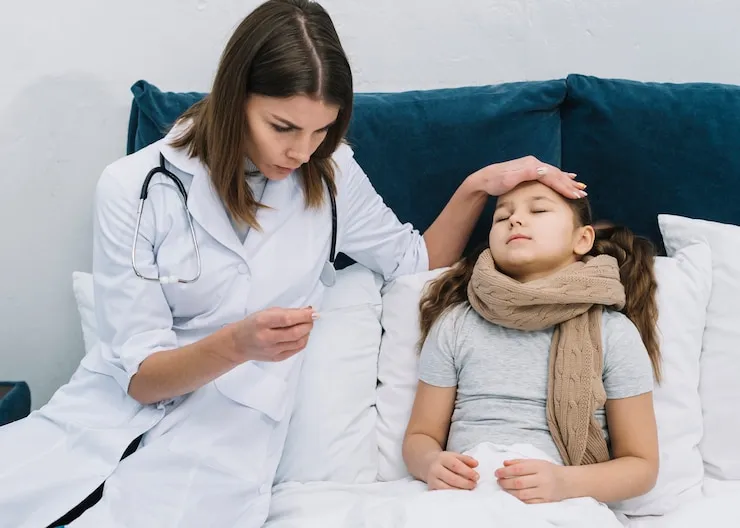Aaron Jackson
Tiny Blisters, Big Trouble? Hand, Foot & Mouth Disease Explained!
Is your child experiencing a sudden outbreak of tiny blisters on their hands, feet, and mouth? Don't panic! This article sheds light on Hand, Foot & Mouth Disease (HFMD), a common childhood illness. Here, we'll explore the causes, symptoms, spread prevention methods, and effective ways to soothe your child's discomfort.
What is Hand, Foot & Mouth Disease (HFMD)?
Hand, Foot & Mouth Disease (HFMD) is a highly contagious viral infection primarily affecting young children under the age of 5. While it can be uncomfortable, HFMD is usually mild and resolves within a week or two. The most common culprit is the Coxsackievirus A16, but other strains can also cause the disease.
What Causes HFMD? Viruses, Contagion, and Keeping Your Child Safe
The viruses that cause HFMD are highly contagious and easily spread through close contact with infected individuals. Here's how the virus can be transmitted:
- Direct Contact: Direct contact with the fluid from blisters or respiratory secretions (coughs and sneezes) of an infected person can spread the virus.
- Indirect Contact: Touching contaminated surfaces or objects (toys, utensils) used by an infected person can also spread HFMD.
- Fecal-Oral Route: Diaper changing or contact with feces from an infected child can also transmit the virus.

Here are some simple yet effective ways to prevent the spread of HFMD:
- Frequent Handwashing: Frequent and thorough handwashing with soap and water is the cornerstone of preventing HFMD and other contagious illnesses.
- Disinfecting Surfaces: Regularly disinfect surfaces and toys in areas frequented by young children, especially if there's a suspected case of HFMD.
- Avoiding Close Contact: Limit close contact with infected individuals, especially during the first week of illness when the virus is most contagious.
- Good Hygiene Practices: Teach children good hygiene practices like coughing or sneezing into their elbow and avoiding touching their face.
Spotting the Signs: Symptoms of Hand, Foot & Mouth Disease
While the telltale mouth and blister rash are classic signs, HFMD can manifest in various ways. Early symptoms might seem like a common cold:
- Fever: A low-grade fever is a common initial symptom.
- Sore Throat: A sore throat can be present, making swallowing uncomfortable.
- Loss of Appetite: Reduced appetite due to a sore throat or overall discomfort is common.
- Malaise: A general feeling of unwellness and fatigue is often experienced.
Within a day or two of the initial symptoms, you might notice:
- Mouth Rash: Small, painful red blisters appear on the tongue, inner cheeks, and gums.
- Hand and Foot Rash: A red, bumpy rash with small blisters develops on the palms of the hands and soles of the feet. The rash may also appear on the buttocks.
These additional symptoms may be present in some cases:
- Headache: A mild headache can accompany other symptoms.
- Muscle Aches: General muscle aches and discomfort might be experienced.

Typically, the blisters break and scab over within a few days, and the rash fades within a week or two.
Soothing Discomfort and Promoting Healing: Home Remedies for HFMD
While there is no specific treatment for HFMD, home remedies can help alleviate symptoms and promote healing:
- Pain Relief: Over-the-counter pain relievers like acetaminophen or ibuprofen can help manage fever and discomfort. Always follow dosage instructions carefully, especially for children.
- Soothing Mouth Soreness: Offer cool drinks, popsicles, or yogurt to soothe a sore throat and mouth. Encourage frequent sips of fluids to prevent dehydration.
- Bland Foods: If swallowing is uncomfortable, offer bland foods like mashed potatoes, applesauce, or yogurt.
- Topical Relief: A topical ointment or lidocaine spray (approved for children) can provide localized numbing for mouth sores.
- Hydration: Ensure your child stays well-hydrated to prevent dehydration and promote healing. Offer cool fluids like water, diluted fruit juices, or pedialyte (for infants).
- Rest: Encourage plenty of rest to allow the body to heal.

 Telehealth Visits Available
Telehealth Visits Available
